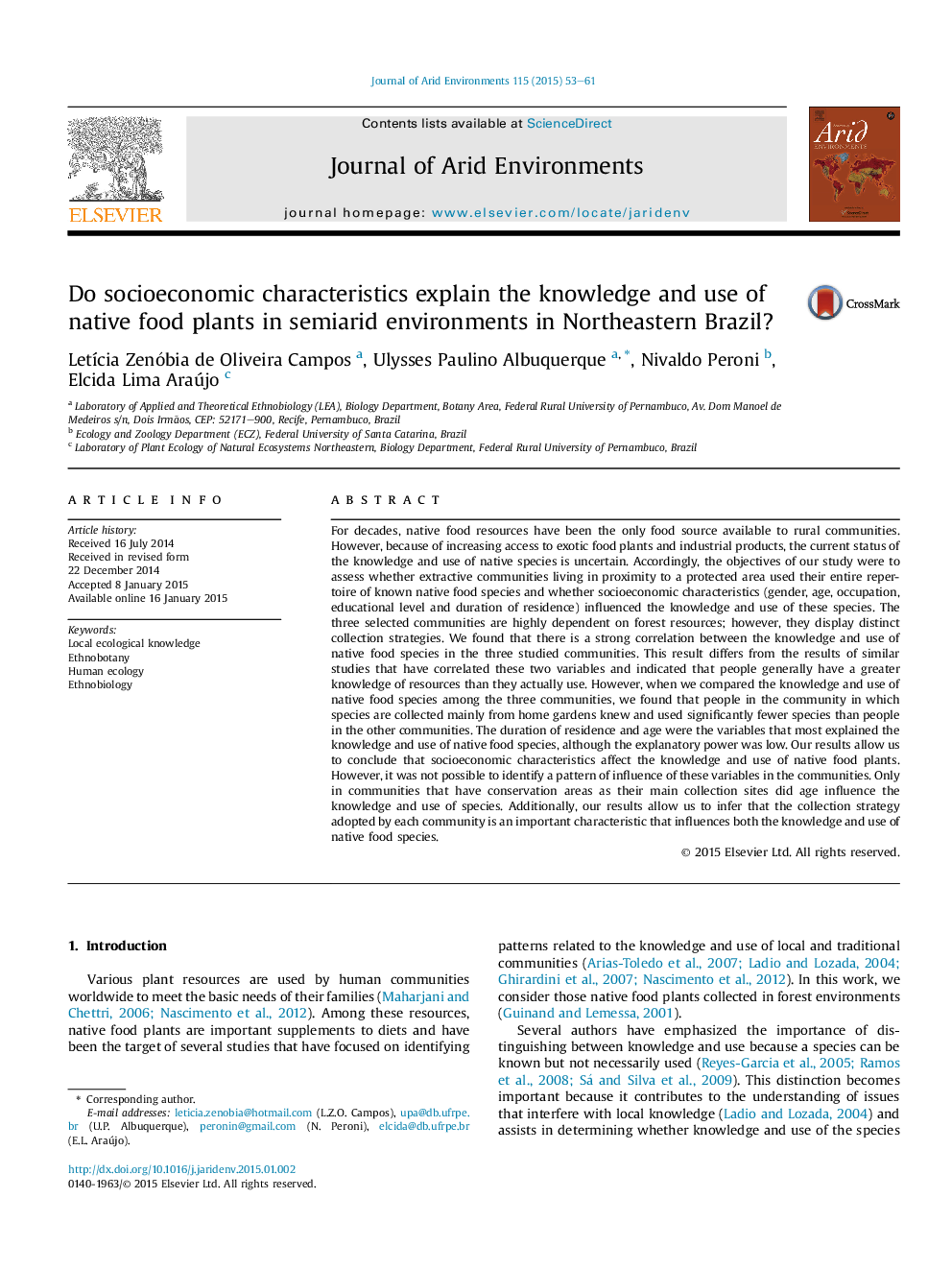| کد مقاله | کد نشریه | سال انتشار | مقاله انگلیسی | نسخه تمام متن |
|---|---|---|---|---|
| 4392933 | 1618244 | 2015 | 9 صفحه PDF | دانلود رایگان |
• There is a strong correlation between knowledge and the use of native food plants.
• The collection strategies adopted by each community influence the number of known and used species.
• Age significantly influenced the knowledge and use of food plants in communities that collect native plants in the forest.
For decades, native food resources have been the only food source available to rural communities. However, because of increasing access to exotic food plants and industrial products, the current status of the knowledge and use of native species is uncertain. Accordingly, the objectives of our study were to assess whether extractive communities living in proximity to a protected area used their entire repertoire of known native food species and whether socioeconomic characteristics (gender, age, occupation, educational level and duration of residence) influenced the knowledge and use of these species. The three selected communities are highly dependent on forest resources; however, they display distinct collection strategies. We found that there is a strong correlation between the knowledge and use of native food species in the three studied communities. This result differs from the results of similar studies that have correlated these two variables and indicated that people generally have a greater knowledge of resources than they actually use. However, when we compared the knowledge and use of native food species among the three communities, we found that people in the community in which species are collected mainly from home gardens knew and used significantly fewer species than people in the other communities. The duration of residence and age were the variables that most explained the knowledge and use of native food species, although the explanatory power was low. Our results allow us to conclude that socioeconomic characteristics affect the knowledge and use of native food plants. However, it was not possible to identify a pattern of influence of these variables in the communities. Only in communities that have conservation areas as their main collection sites did age influence the knowledge and use of species. Additionally, our results allow us to infer that the collection strategy adopted by each community is an important characteristic that influences both the knowledge and use of native food species.
Journal: Journal of Arid Environments - Volume 115, April 2015, Pages 53–61
